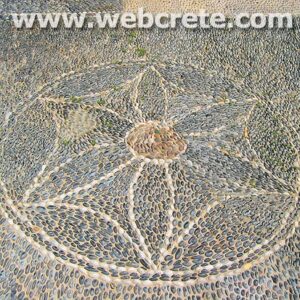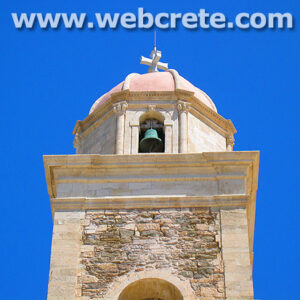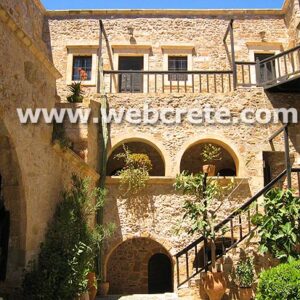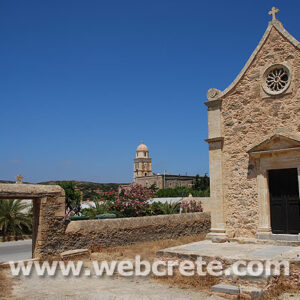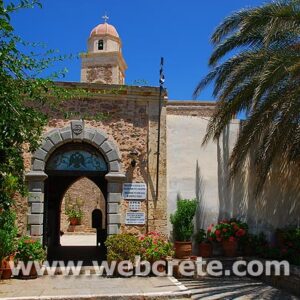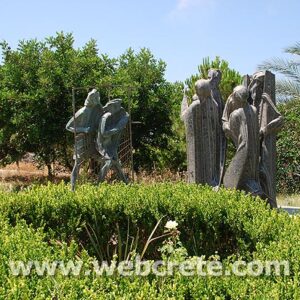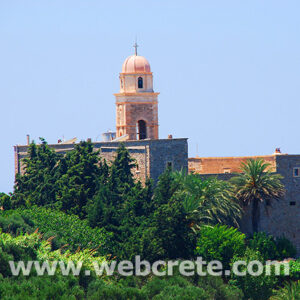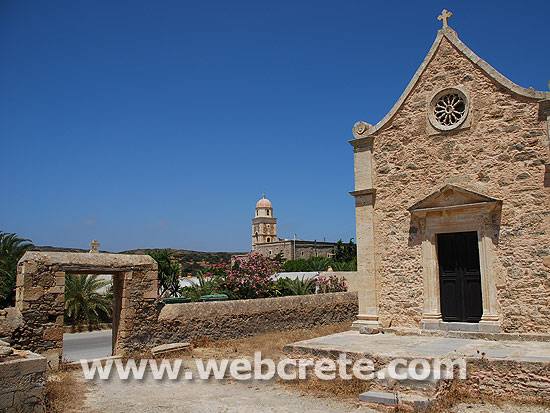
01 Jan Toplou Monastery
Moni Toplou (Greek: Μονή Τοπλού) is a 15th century monastery located in a dry and barren area in the Prefecture of Lasithi, on the eastern part of the island of Crete in Greece. It is about 6 km north of the village of Palekastro and 17 km east of Sitia. The monastery was originally called Panagia Akrotiriani (Virgin Mary of the Cape), after the nearby Sidero cape. Its current name literally means “with the cannonball”, thus called by the Turks for the cannon and cannonballs (Turkish: top) it had in its possession for defensive purposes.
Toplou monastery is one of the most significant monasteries in Crete, dedicated to Panagia (Virgin Mary) and St. John the Theologian. It was founded around the mid 15th century, probably on the ruins of an earlier convent. The monastery was plundered by the knights of Malta in 1530 and shattered in 1612 by a strong earthquake. Due to its strategic position, the senate of the Republic of Venice, then ruler of Crete, decided to financially aid in rebuilding it. The monastery flourished until the surrender of eastern Crete to the Turks in 1646, after which it was abandoned for a long time. In 1704, it acquired special protection privileges from the Patriarch (i.e., stauropegic) and was re-inhabited.
After its monks were slaughtered by Turks in 1821 during the Greek Revolution of Independence, Toplou was again deserted until 1828. In 1866, during the massive Cretan revolt against the Turks, it was once again devastated. During the German occupation of 1941-44, Toplou was providing shelter to resistance fighters and housed their wireless radio. When this was discovered by the Germans, the abbot and two monks were tortured and executed.
Architecture
Having to defend itself from pirates and invaders, Toplou monastery is heavily fortified, being laid out around a courtyard paved with sea pebbles and surrounded by strong, 10 meters high square walls. In its present form it extends to about 800 square meters in three floors, divided into cells, guest houses, kitchens and warehouses. The main church (katholikon) is built as a two-nave basilica and the belltower dates back to 1558.

 Search our website and read about
Search our website and read about 

